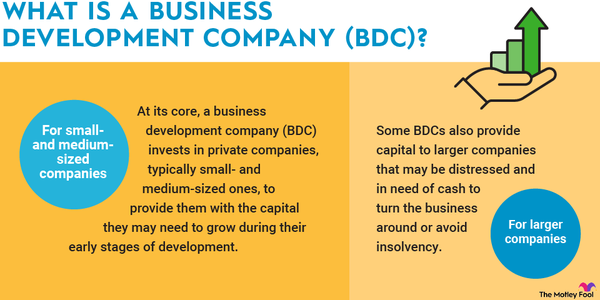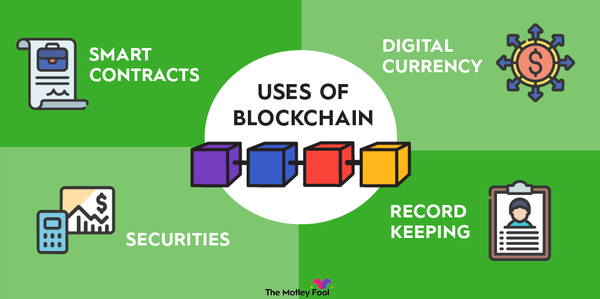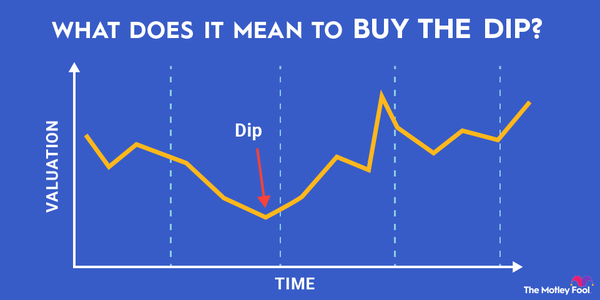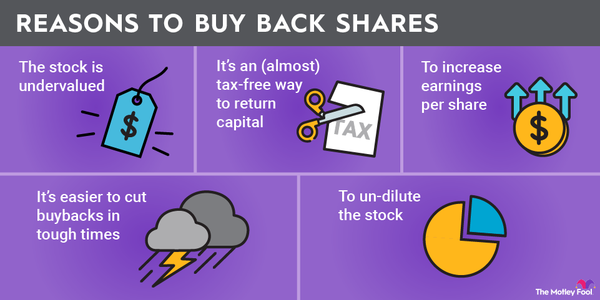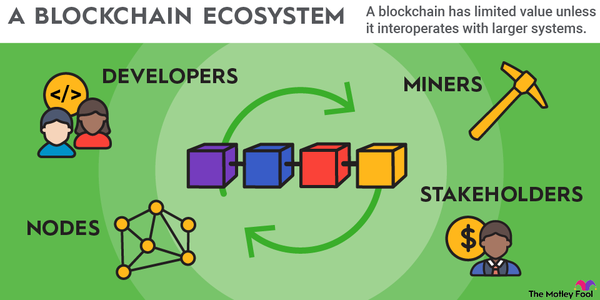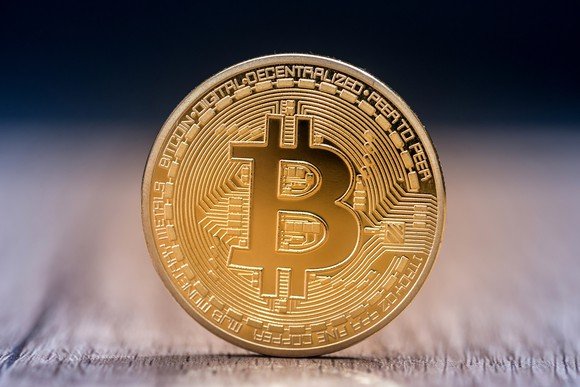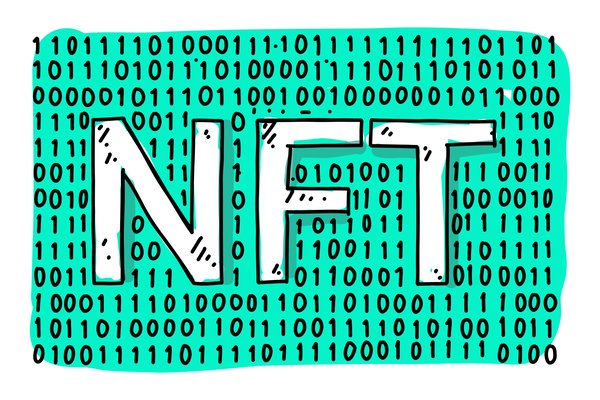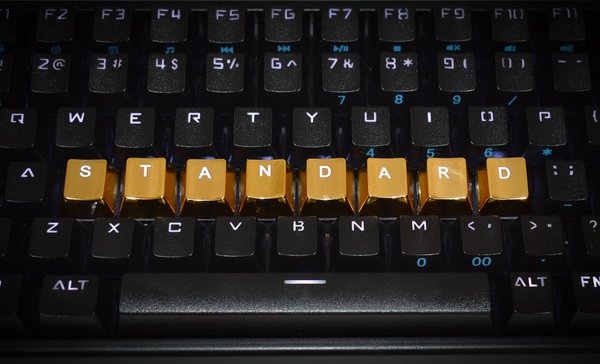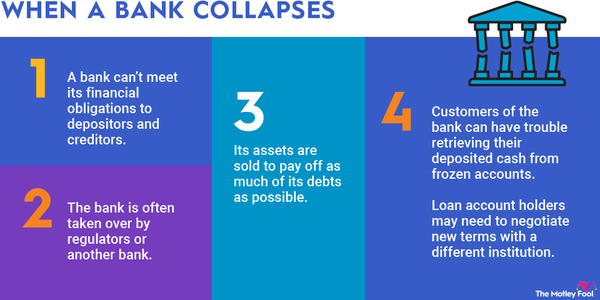A blockchain fork is like a fork in the road for a cryptocurrency project. This is what happens when the community of developers behind an open-source blockchain system comes up with new ideas and wants to tweak the code. Many cryptocurrencies were started this way. So, let's take a look at what blockchain forks are, how they work, and why they matter to cryptocurrency investors.

What is a blockchain fork?
What is a blockchain fork?
A blockchain is a publicly available ledger of transactions. Each block of information contains a large number of transactions, along with links to the previous and subsequent data blocks. Anybody can read this information, but the transactions cannot be changed, and everything is wrapped in several layers of encryption.
All of this functionality is managed by software running on many computers known as nodes. Adding new blocks to the blockchain ledger requires many nodes to agree that the new data is good and should be included in the next block.
In most cases, this software is created and supported by a global community of open-source developers. Changes to the code are done by forking the existing code. It's called a soft fork if the new version of the blockchain nodes' software is compatible with older versions. A hard fork essentially creates a whole new system and breaks compatibility with former code generations.
So, a soft fork is basically a gentle software upgrade, and it's OK if several different versions are running simultaneously for a while. This is a common way to go for simple bug-fix releases or adding optional features to the established node code.
Hard forks can do two things. If everyone is on board with the code-breaking changes, the whole network of blockchain nodes upgrade their software in parallel and continue as one united project. But if some node owners prefer the older code, the hard fork effectively creates a new blockchain network that can't exchange information with the previous version. Some of today's most popular cryptocurrencies were started as hard forks of other cryptocurrencies.
| Feature | Soft fork | Hard fork |
|---|---|---|
| Backward compatibility | Yes | No |
| Disruption to the network | Minimal | Significant |
| Use cases | Introducing optional features, fixing bugs | Making major changes to the blockchain, creating new cryptocurrencies |
| Outcome of a fork | One chain continues, the other dies out | Two chains coexist |
How do forks work?
How do forks work?
Soft forks happen all the time. Every serious blockchain network occasionally updates its code to stay current with modern blockchain technology and move forward with new and improved features. Getting every node on board with the new version isn't strictly necessary, but it's still a good idea to standardize the code base so you don't run into unexpected bugs when different versions of the node software interact with each other. So, the blockchain communities typically try to get everyone on board with soft forks fairly quickly.
Hard forks can be game-changing. That's not a problem when everyone agrees that the project is moving in the right direction. A synchronized update with a firm date and time for the cut-over will simply upgrade the entire system to a new software version. The updated code will have gone through rigorous testing before this point, and the result should be a smooth transition to a better blockchain system. Other than enjoying the improvements of the new code -- perhaps tighter security, improved smart contract execution, or faster validation of transactions -- coin owners shouldn't even notice when the hard fork happens.
But the changes can be controversial, too. When developers and node owners disagree on the best way forward, a blockchain project can end up with some nodes installing the new software and others staying with the old one. For example, a few tweaked variables in the code may boost the processing performance at the expense of lower security. Some people see value in that change, while others insist on iron-clad security. Therefore, the project is split into two branches with different design philosophies. A new blockchain network is born.
Blockchain Node
Why should crypto investors care about blockchain forks?
Why should crypto investors care about blockchain forks?
Cryptocurrency investors should keep an eye on the roadmaps of their favorite crypto names. These plans are usually published on the crypto project's official website. Planned forks outline the blockchain network's future, and it's always good to know where you're going. In particular, ambitious hard forks can lead to a dramatically different cryptocurrency system or split the community into two separate cryptocurrencies.
You don't have to pick a side in the contentious hard forks, by the way. The existing blockchain continues running as before, and the incompatible new version goes off in a different direction. Owners of the original cryptocurrency will find their existing holdings untouched but joined by an equal number of the new coin. In other words, you get a free helping of a new cryptocurrency with every hard fork, and then it's up to the free market to determine how the value of each branch will develop over time.
Related investing topics
Examples
A handful of examples from Bitcoin's history
Cryptocurrency giant Bitcoin (CRYPTO:BTC) has performed many forks, both soft and hard.
Most of Bitcoin's forks are soft, introducing simple changes such as bug fixes and updated text in the user interface. A couple of sophisticated new features have also been implemented as soft forks, including the segregated witness (SegWit) upgrade in 2017 and the Lightning Network rollout, which began in 2018 and was still ongoing in 2023. SegWit restructured Bitcoin's data blocks, making the transaction processing more efficient. Lightning Network boosts the speed of Bitcoin transactions with a solution that processes transactions outside the main Bitcoin network. Original Bitcoin nodes can interact just fine with nodes running the SegWit and Lightning Network upgrades -- they just don't take part in the added functionality.
Hard forks make more dramatic changes to the blockchain system, and Bitcoin's developers often stick to their classic solutions.
- Bitcoin Cash (BCH 0.65%) was created by a hard fork of Bitcoin in 2017. This blockchain network uses larger data blocks, which increases the theoretical processing speed. However, quicker processing also results in lower data security, and the boosted block size requires substantially more powerful node computers. As a result, Bitcoin Cash is a more efficient choice for processing large volumes of transactions, while Bitcoin offers safer long-term storage of cryptocurrency value.
- In 2018, some Bitcoin developers proposed changing the blockchain's mining algorithm to reduce the need for ultra-specialized mining chips. A hard fork created the Bitcoin Gold (BTG 4.68%) cryptocurrency, with a mining algorithm better suited to common graphics cards (GPUs).
- The Litecoin (LTC -1.67%) cryptocurrency is a slightly different beast. Instead of forking Bitcoin's software and its active blockchain ledger, Litecoin started from scratch as a tweaked version of Bitcoin's software. The network mints new data blocks four times faster than Bitcoin and also relies on a GPU-friendly mining algorithm. So you can think of Litecoin as a hard fork of Bitcoin's code base, but it has nothing to do with the larger crypto network's blockchain ledger.
Despite a plethora of hard forks, the original Bitcoin cryptocurrency continues to dominate the crypto market. Bitcoin was worth $500 billion in September 2023, far ahead of its many forks. Litecoin's market cap was roughly $5 billion at the same point in time. Bitcoin Cash stopped at $4 billion, and Bitcoin Gold's market value was better measured in millions than in billions.























